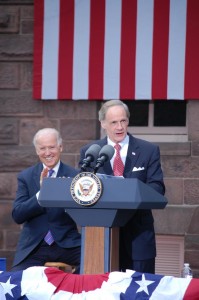 Some BIG news for Delaware from U.S. Senator, Tom Carper…
Some BIG news for Delaware from U.S. Senator, Tom Carper…
On March 25, 2013, President Barack Obama established the First State National Monument as America’s 400th national park site and the first unit of the national park system in Delaware. This new park is comprised of three historic areas:
- The Dover Green
- The New Castle Court House complex, including the courthouse, Green and Sheriff’s House
- The Woodlawn property.
Our monument will tell the story of the early Dutch, Swedish, Finnish, and English settlement of the colony of Delaware, as well as Delaware’s historic role as the first state to ratify the Constitution. After years of work by people in communities across Delaware, state and local leaders, civic groups and businesses – and years of Delawareans paying taxes that fund the National Park Service without having a park of our own – we were finally able to get the national park unit we deserve. Hopefully soon, our state will begin to see the economic boost from tourism that a national park unit can bring.
The very next day, on March 26, I joined Vice President Joe Biden, Secretary of the Interior Ken Salazar and New Castle Mayor Don Reese at the Old Sheriff’s House in Old New Castle on a crisp spring afternoon to celebrate our new monument and our state’s rich history. The celebration was particularly timely as we also marked the 375th anniversary of the first Swedes and Finns to land in this country on the shores of the Christina River the same week. It was a fitting tribute to a point in history which had a significant impact on both our state and our nation.
For more photos from the event in New Castle, click here.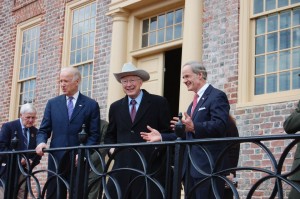
Even though I’m so proud of this milestone, my work to get the story of Delaware’s early settlements and its role in the birth of our nation told through a National Park is not done. I’ll continue working hard to include all of the historic sites outlined in my First State National Historical Park legislation, which passed in the Senate. Simply put, I won’t give up. You can read more about my full plan for our own national park here.
Our state – the First State – has a unique and important story. This national monument begins to tell it, and I won’t rest until a full national park brings people from all over the world to Delaware to hear it.
Thanks,
U.S. Senator Tom Carper
MORE ABOUT THE DELAWARE NATIONAL MONUMENT UNIT
This new park is comprised of three historic areas in Delaware(Kent & New Castle Counties):
 The Dover Green
The Dover Green
It was on the City of Dover’s central square, known as The Green, that Delaware voted to ratify the U.S. Constitution on December 7, 1787. Delaware became the first of the 13 former colonies to ratify the United States Constitution, laying claim to the moniker “First State.” Throughout the years, The Green has also been the location of many rallies, troop reviews, and other patriotic events. Today, The Green remains the heart of Dover’s historic district and is the location of the Delaware Supreme Court and the Kent County Courthouse. Learn more, visit www.cityofdover.com.
The Green is a historical park located in old downtown Dover(Kent county) near the Courthouse and the State House. Laid out in 1717 in accordance with William Penn’s 1683 orders, it was here that Delaware voted to ratify the U.S. Constitution. Special events are held here throughout the year such as Old Dover Days, Spring and Summer Performing Arts Series, 4th of July festivities, and Caroling on The Green to name a few. Benches and beautiful old trees shade this historic site and is within walking distance to stores, restaurants, and other historic sites in the capital city. Source Press Release
The New Castle Court House Complex
The Complex including the New Castle Courthouse, Green and Sheriff’s House
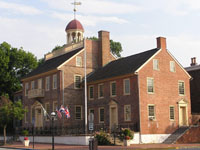 The New Castle Courthouse
The New Castle Courthouse
The New Castle Court House, located in the heart of the historic City of New Castle, Delaware, is one of the oldest surviving courthouses in the United States and a registered National Historic Landmark. The original 1732 court is built over the remains of the 1660s courthouse, with additions and modifications throughout the 18th and 19th centuries. All jurisdictions of Delaware’s courts, and including the federal courts, have met in this building. The state courts removed to the City of Wilmington in 1881 with the changing of the county seat, but occasional court sessions and proceedings are still held here. Visit their Facebook site @ New Castle Court House Museum.
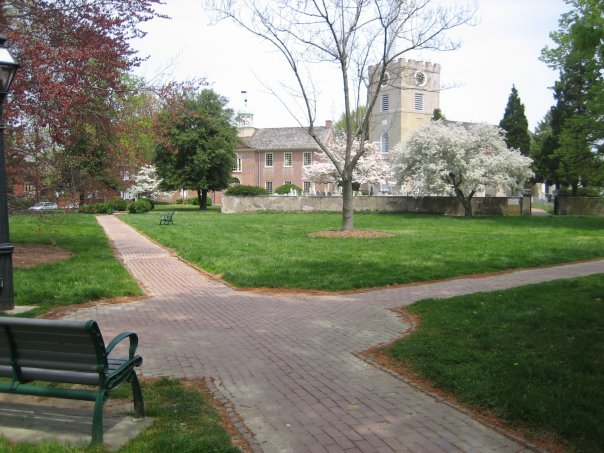 New Castle Green
New Castle Green
The practice of maintaining a green open space in the middle of a village or more populated environment began hundreds of years ago in England. The green was an open area of land within a settlement where the citizens could go for exercise, to graze livestock in a secure area, where markets were held, where justice was dispensed or where village services were located.
Today the New Castle Green provides both residents and visitors with an important sense of open space, in a heavily populated area. Division of Historical and Cultural Affairs maintains the trees on The Green and has done so since 1967. In 1989 the New Castle Advisory Committee was established to provide additional opportunities for community involvement regarding landscape issues affecting The Green.
These two sites are part of the New Castle National Historic Landmark District and are the core of the oldest town in the Delaware River Valley. Dating to 1732, the New Castle Courthouse is one of the oldest surviving courthouses in America. It was in this building on June 15, 1776, that legislators passed a resolution separating from Great Britain and Pennsylvania, creating the “Delaware State.” It was also here in 1848 that abolitionists Thomas Garrett and John Hunn were prosecuted for violating the Fugitive Slave Act in a trial overseen by future Chief Justice of the United States Roger Taney. Found guilty, they were fined thousands of dollars, lost their homes and businesses, but vowed to continue the fight against slavery regardless of the cost. Source Press Release
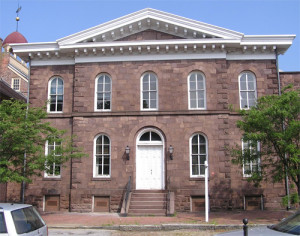 The New Castle Sheriff’s House
The New Castle Sheriff’s House
To the right of the sheriff’s house was a two story jail and behind a tall stone wall, the jailyard, whipping post and pillory. Immediately to the right of the jailyard is The Arsenal, now a restaurant site, formerly a public school and before that a one story arsenal built in anticipation of the war of 1812. The statue is of William Penn, who in 1683 became the proprietor of Pennsylvania and its three lower counties (Delaware). He granted 1,000 acres outside of town in 1701 for common land for “the use and behoof of the citizens of New Castle”. This Common still exists and the Trustees still use the income from this Common for this purpose. Across from the sheriff’s house is the Presbyterian Church, one of 7 which organized the first Presbytery in American in 1706. Present brick meeting house was built in 1707, a successor to the Dutch Reformed Church built in 1657 on the Strand side of the lot.
Sitting next to the court house is the Sheriff’s House, built in 1857 and designed by noted architect Samuel Sloan; it is all that remains of the first county prison in Delaware. Both the courthouse and Sheriff’s House are located on the historic New Castle Green, which dates to Delaware’s Dutch settlement period and served as the public square. Source Press Release
 The Woodlawn Property
The Woodlawn Property
Only a few miles from downtown Wilmington, the Rockford Woodlawn property is a beautiful and serene stretch of land that encompasses farmland, Piedmont forests, streams, springs, a system of paths and trails, and riverbed. Beautiful vistas across the unmarred landscape have been preserved for a century thanks to the legacy of William Poole Bancroft, a Wilmington merchant who aimed to provide a balanced and rich life for the common laboring classes of Wilmington. Along with creating early affordable and livable housing in urban areas, he purchased large tracts of land to create parks in urban areas and beyond. In the spirit of this forward-thinking Quaker, The Rockford Woodlawn Fund and other organizations are moving toward a more accessible, better funded use of the pristine open space he protected. Learn More, Visit www.rockfordwoodlawn.com
This site is comprised of more than 1,100 acres of woods and rolling pastures three miles north of Wilmington, 220 of which are in Delaware County, Pennsylvania, and includes farmlands, scenic rock outcrops and wetlands along the banks of the Brandywine River. The property is historically significant to the early settlement in Delaware. It straddles and contains the demarcation line known as the “12-mile arc,” which is a part of a circle drawn from the Old New Castle Courthouse establishing the boundaries of the British colonies of Pennsylvania and Delaware in the 17th century. The property contains homes dating back to some of the first Quakers that settled the area with William Penn and contains landscape patterns of these original Quaker settlements. The tract was acquired by The Conservation Fund from the Woodlawn Trustees and donated to the National Park Service for inclusion in First State National Monument. Source Press Release
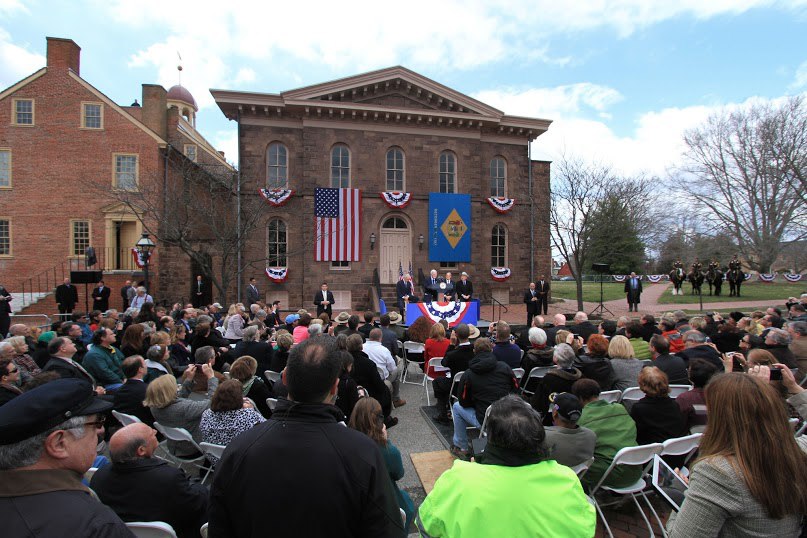







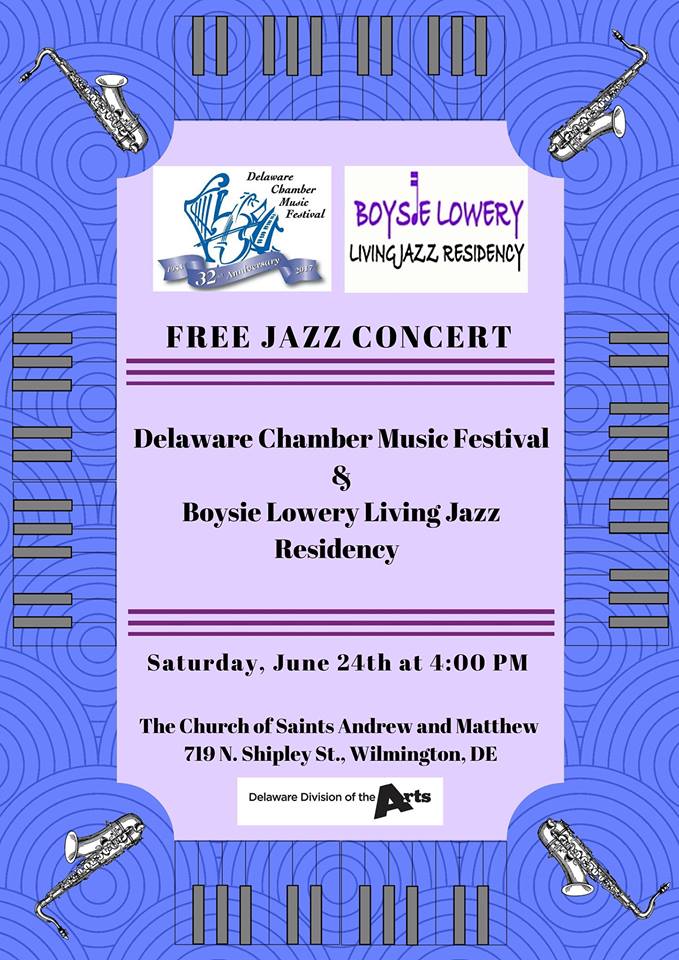

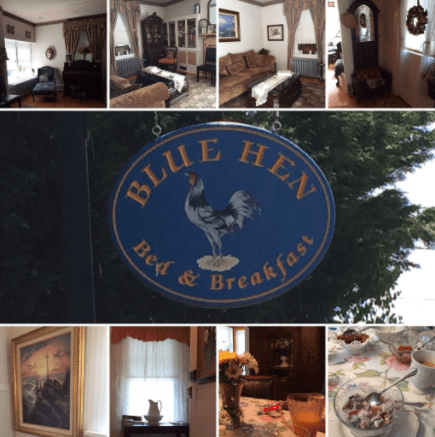
Leave A Comment